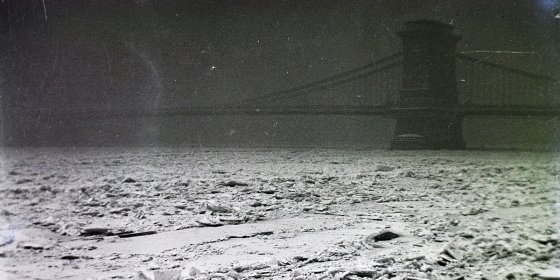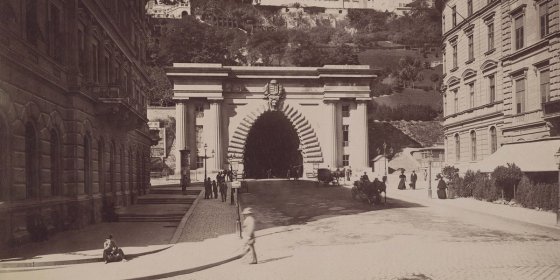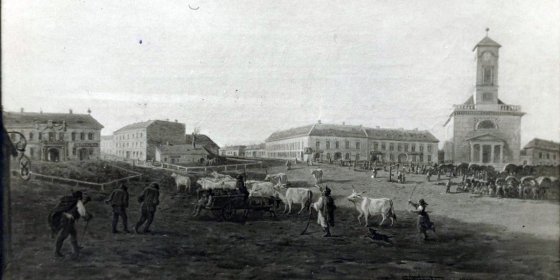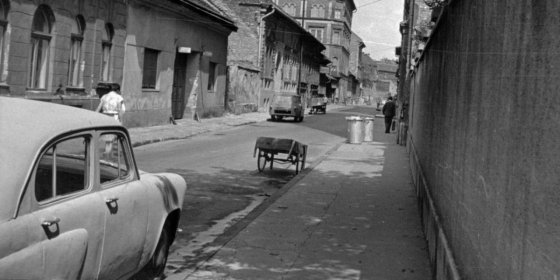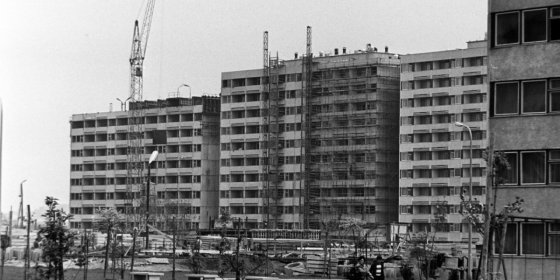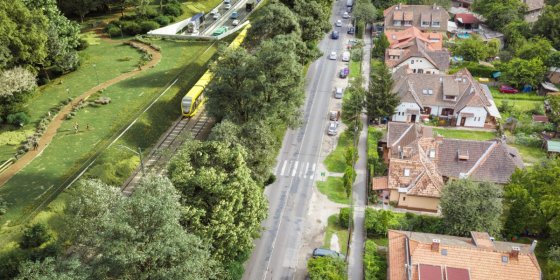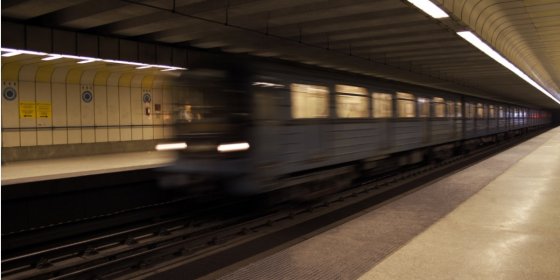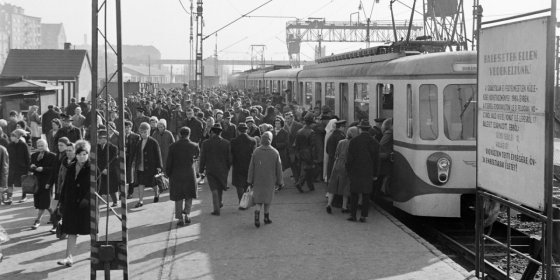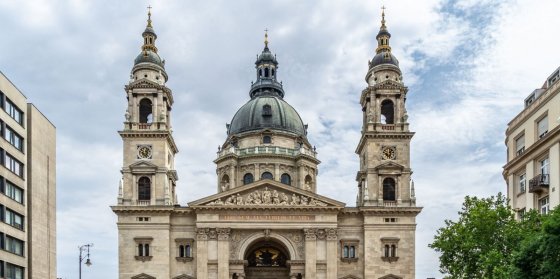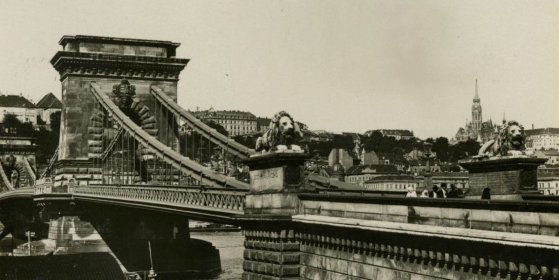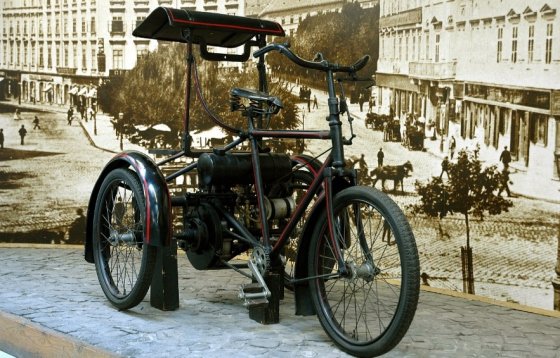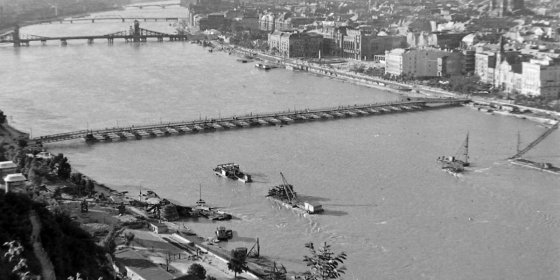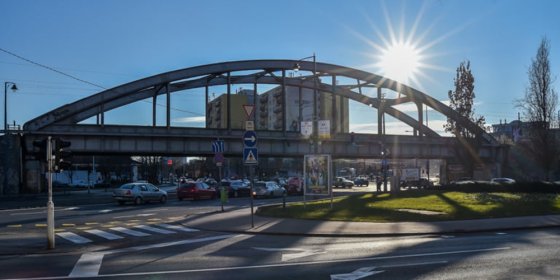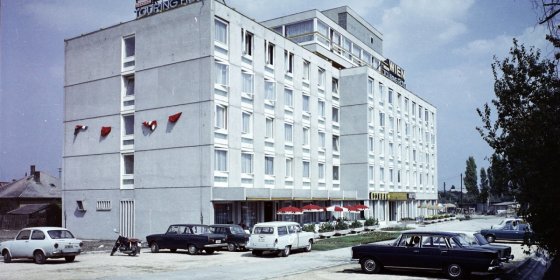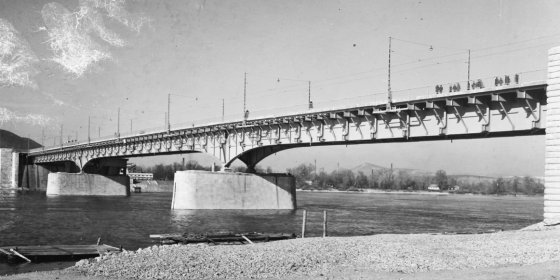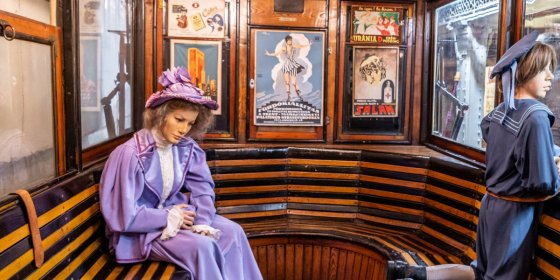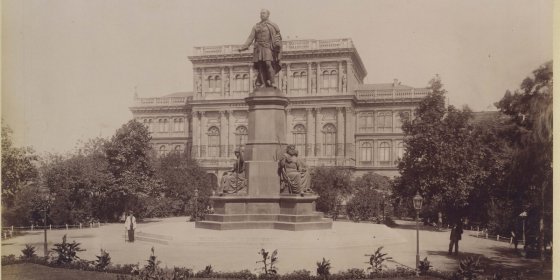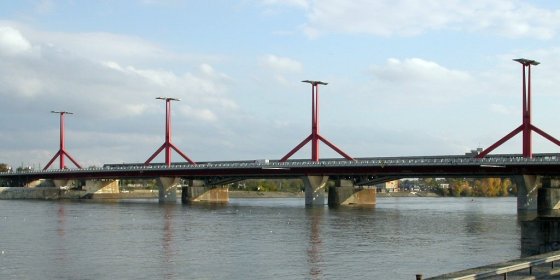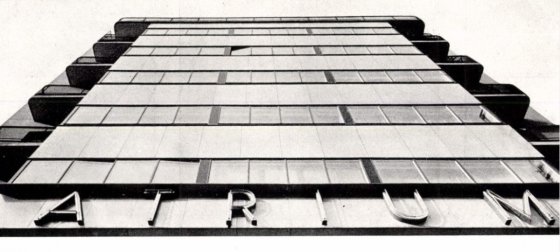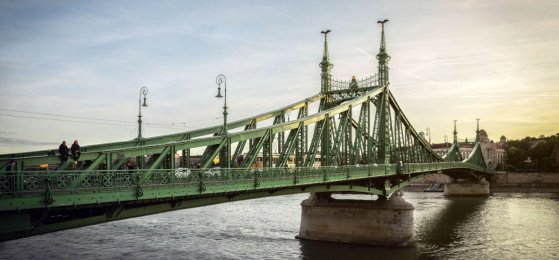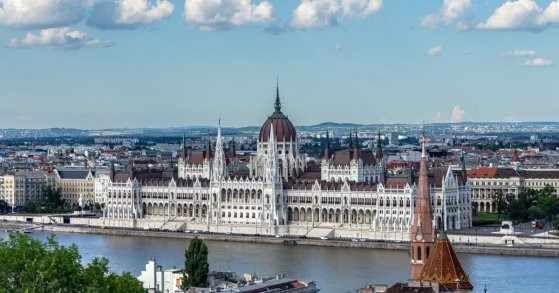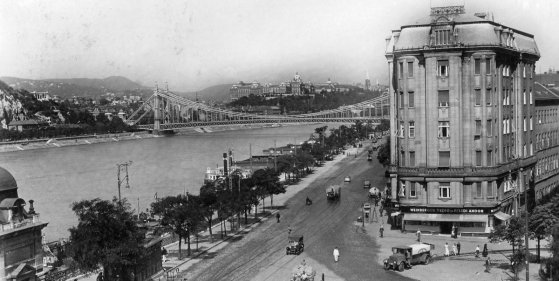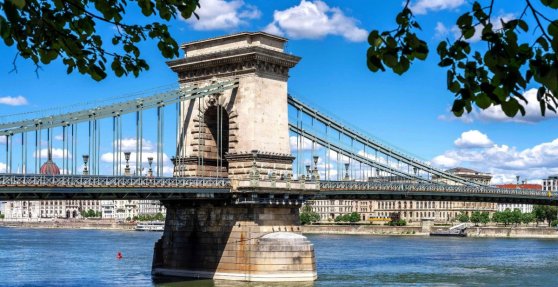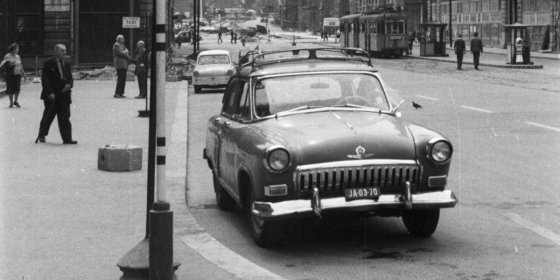 The „intertwined history” of the bridges and the city of Budapest
Which ideas and events have shaped the fate of bridges of Budapest and the cityscape? Alongside many other interesting facts, this question is also answered this newly published book by the Budapest City Archives, which introduces the history of bridges in Budapest.
The „intertwined history” of the bridges and the city of Budapest
Which ideas and events have shaped the fate of bridges of Budapest and the cityscape? Alongside many other interesting facts, this question is also answered this newly published book by the Budapest City Archives, which introduces the history of bridges in Budapest.
Csaba Domonkos
 Sixty-five years ago an earthquake shook Budapest
Sixty-five years ago an earthquake shook Budapest
January 9, 2021 at 10:00 AM
Recent earthquakes in Croatia have caused more than 100 million HUF damage in Hungary, while some tremors have even been felt in Budapest. Earthquakes are not extremely common in the Carpathian Basin but do occur sporadically. One of the largest recorded tremors in Hungary, which also led to the loss of life, happened on the outskirts of Budapest 65 years ago, in January 1956.
A funeral gave life to the bridge that created Budapest
January 7, 2021 at 9:00 AM
Two hundred years ago, a younger Hungarian hussar officer made a rather reckless statement to a friend. His words had many consequences and changed the lives of many forever. The officer, in fact, was only in a hurry to reach his father's funeral.
A dream of the Reform Period – A tunnel to run through Castle Hill
January 5, 2021 at 3:00 PM
Even when building Chainbridge the builders knew, the Buda bridgehead is in the wrong place, a point which is difficult to reach with a cart or carriage. A solution was needed, but Castle Hill stood in the way. Eventually, a company was founded to break through the hill 175 years ago.
Leopold Rottenbiller – Three-term Lord Mayor of Pest
January 3, 2021 at 3:00 PM
Leopold Rottenbiller is one of the most unjustly forgotten politicians of Budapest's history, even though a major road bears the name of the urban leader to this day. He served as the Lord Mayor of Pest for three terms, and not in periods of growth, construction and peace. Despite this, Rottenbiller kept the city working. His second term began 160 years ago.
Fifty years ago large-scale plans to redesign Józsefváros were born
December 30, 2020 at 9:00 AM
Various plans to redesign the inner sections of Józsefváros and replace the out-dated kitchen and room flats built at the end of the 19th century were floated decades ago. Fifty years ago the Budapest Council adopted a large-scale plan to demolish 3,400 flats. By the time the district already had mixed experiences of how the city centre could be rehabilitated.
Statue of Attila József unveiled on Kossuth Square 40 years ago
December 29, 2020 at 9:00 AM
A few years ago, the temporary removal of the Attila József statue – erected in 1980 on the site of the former Andrássy monument – from Kossuth Square due to the area's renovation caused an enormous uproar. Many believed that the work had been removed permanently. But a few months later, the statue was on Kossuth Square again. Although it was not put back in its original place, many say it found a better place only a few metres away, on the riverbank.
When panel housing defined urban development
December 23, 2020 at 10:00 AM
Forty-five years ago, in the last days of 1975, a new urban planning regulation was adopted in Budapest. The purpose of the provision was to provide an appropriate framework for the construction or housing estates and urban development, while also designating development zones and the number of buildings to be erected.
A train to the imperial city – Budapest–Vienna train line opened in 1850
December 20, 2020 at 9:00 AM
1850 was a dark year for Hungary. After the war of independence was lost, so was freedom. Haynau's reign of terror through thousands into prison. But in 1850 a dream came true. A rail connection was completed between Pest and Vienna reached.
"Not on the surface, not in a ditch, or in a tunnel" – Residents protest proposed Pest access roads to Galvani Bridge
December 17, 2020 at 10:00 AM
A petition for the protection of Kiserdő, along Határ Road, was recently taken to the Mayor of Budapest by local NGOs. The petition protests the planned access road leading to Galvani Bridge on the Pest bank of the river.
Phone lines once defined the Budapest real estate market
December 7, 2020 at 10:00 AM
Life today is unimaginable without a phone, yet not so long ago people could wait decades for a connection to be brought to their flat. Those who had landlines could consider themselves privilege, and those selling flats with one could ask a higher price. Thirty years ago, a new telephone exchange in Csepel with 18,000 lines was a huge step forward. Nevertheless, it seemed that it would only be possible to connect half of the flats in the city with phone lines by 2000.
Construction of metro line 3 completed thirty years ago
December 5, 2020 at 9:00 AM
The construction of metro line 3 was a massive undertaking. After 20 years, it is still not fully completed, while its existing sections have been under constant renovation for years. Its last phase was opened 30 years ago, in December 1990.
Fifty years since the new trains arrived some are still in use on suburban railway lines
December 2, 2020 at 10:00 AM
Over the last few days, a number of articles have surfaced regarding the two companies that remain in competition to provide the new trains for the suburban railway lines. The new vehicles are much needed, as most of the current trains were bought in the 1970s. The oldest of them has been in use on the Csepel line for 55 years.
Fifty years of construction – Saint Stephen's Basilica opened 115 years ago
December 1, 2020 at 3:00 PM
St. Stephen's Basilica is the largest church in Budapest. Today, it is one of Budapest's most famous monuments of the capital, thanks to the work of Miklós Ybl. However, it also features prominently in the oeuvre of two other architects: József Hild started its design, while József Kauser finished its construction. Construction lasted an astounding 55 years, and the church was finally consecrated 115 years ago, on 19 November 1905.
A Tu-154 aircraft first visited Budapest 50 years ago
November 29, 2020 at 10:00 AM
The introduction of a new type of aircraft has always been a great sensation in Budapest. It was no different when the most modern passenger aircraft of the time, a product the Soviet aviation industry, the Tu-154, arrived in the city 50 years ago.
The new Chain Bridge opened 105 years ago
November 27, 2020 at 10:00 AM
The Chain Bridge, as seen today, is not the structure that István Széchenyi dreamed of and which was built to the plans of William Tierney Clark. The Chain Bridge we love and use today is 105 years old and was opened on 27 November 1915.
Motorised Tricycles – A new postal service arose 120 ears ago
November 25, 2020 at 9:00 AM
The Hungarian Postal Service played a central role in the motorisation of Hungary. The company first began using foreign vehicles, but 120 years ago, the first Hungarian-made vehicles entered into service. These early attempts were not even cars, but motorised tricycles, powered by Hungarian internal combustion engines.
Böske Bridge – The story of Petőfi Pontoon Bridge
November 20, 2020 at 9:00 AM
Following the devastation of World War II a series of temporary bridges were constructed in Budapest to ensure movement around the city. One of these was the Petőfi Pontoon Bridge, which was named after the fact that it connected Petőfi Square in Pest, with Döbrentei Square in Buda, not far from the ruins of Erzsébet Bridge. However, the population quickly became to use the slightly more ingenious name, Böske Bridge, Böske being a common Hungarian nickname for Erzsébet or Elizabeth. The name Petőfi Bridge was later inherited by a completely different structure.
A new bridge in the heart of the 11th District
November 18, 2020 at 9:00 AM
A rail bridge has crossed above the intersection of Tétényi Road – Bartók Béla Road and Karolina Road in the 11th District for 71 years. In connection to the development of the Southern Ring Railway, a longer and wider railway overpass is being built. The goal is to convert the newly gained space underneath into an urban plaza, with trees and greens, and ample room for pedestrians, cyclists and public transport passengers to move through freely.
When Five Year Plans decided the future of Budapest
November 16, 2020 at 9:00 AM
Under Socialist rule, the state governed economy operated according to what were called five-year plans. These determined the type and volume of goods and raw materials to be produced in the next five year period. However, these should not be equated with a well thought out business plan, as they were not based on realistic demand and business opportunities.
Once known as Stalin Bridge, Árpád Bridge turns 70
November 9, 2020 at 9:00 AM
Its construction was abandoned during the Second World War. It bore Stalin's name for six years and was the longest bridge in the country for years. Árpád Bridge is now seventy years old.
45 years under ground – A museum on Deák Square about the Millennium underground Railway
November 4, 2020 at 3:00 PM
A museum housed in an abandoned underground tunnel, filled with original rolling-stock, and a slew of objects from the history of one the world's oldest underground railways. All of this for the price of a single ticket in the middle of the city, under Deák Square. The Millennium Underground Museum opened 45 years ago.
The Hungarian Academy of Sciences turns 195
November 3, 2020 at 5:30 PM
The imposing main building of the Hungarian Academy of Sciences stands on Széchenyi Square. The institution was founded after almost 100 years of proposals, planning and negotiations. Eventually, a 34-year-old Hussar Captain donated the money needed to create it, 195 years ago.
The memento of a World Fair never held – Rákóczi Bridge turns 25
October 29, 2020 at 9:00 AM
Budapest's first permanent urban bridge built since the end of World War II was completed 25 years ago after 30 different plans were drawn up and 20 years of preparation. It was not welcomed unanimously by Budapest's residents, and the world fair that had been the reason behind its location was never held.
A modern cinema for Buda – Atrium Movie Theatre completed 85 years ago
October 24, 2020 at 3:00 PM
Átrium was a unique cinema in every respect. It differed from the others in Budapest not only because of its modern building but also in how it was operated. The elegant new auditorium seated 800 people and offered a new quality in both sound and elegance when opened in 1935.
Green Liberty – The decision to repaint Szabadság Bridge to its original green was reached 35 years ago
October 17, 2020 at 11:00 AM
Following a tragedy in Vienna, abridge renovation project was launched in Budapest in 1979. Szabadság Bridge was slated for renovation in 1981, however, was eventually prioritised due to urgent work. Despite this, the bridge was closed again in 1985, as the original steel support columns had been corroded so significantly they became unstable. However, during this second renovation, the decision to repaint the bridge to its original green was also made.
Parliament or Palace? – Construction of the Hungarian parliament began 135 years ago
October 12, 2020 at 5:58 PM
On 12 October 1885 150 workers began to dig a 40,000-cubic-metre pit. With this construction of the Hungarian parliament building began based on plans drawn by Imre Steindl. Lasting nearly two-decades the project transformed a neglected, to-be-developed part of the city, Tömő tér, into one of the most symbolic places in the country.
Livable Budapest? The first plans were made 80 years ago
October 11, 2020 at 1:00 PM
Budapest adopted its first modern urban development plan in 1940. The massive 150-page document took eight years to prepare. Its main goal was to provide a livable environment for the inhabitants of the quickly growing city. The plan accounted for an increase in motor traffic, marked routes for underground railways, and pushed for architecturally unified residential areas. It also contained plans for the creation of community gardens in the densely populated areas of Pest and designated the embankment as an expressway for vehicles.
Liveable Budapest? The first plans were made 80 years ago
October 11, 2020 at 1:00 PM
Budapest adopted its first modern urban development plan in 1940. The massive 150-page document took eight years to prepare. Its main goal was to provide a livable environment for the inhabitants of the quickly growing city. The plan accounted for an increase in motor traffic, marked routes for underground railways, and pushed for architecturally unified residential areas. It also contained plans for the creation of community gardens in the densely populated areas of Pest and designated the embankment as an expressway for vehicles.
A bridge without a name – How Chainbridge in Budapest had no name
October 7, 2020 at 11:00 AM
Chain Bridge in Budapest had no official name until 1915 and is still known simply as Chain Bridge in everyday use. However, Lajos Kossuth proposed in 1842 at the laying of its foundation stone that the bridge be named after his great political rival, István Széchenyi, the aristocrat who initiated the construction. Others hoped to name the first permanent crossing between Buda and Pest after princes and princesses. Still, the Ministry of Finance that owned the bridge accepted none of these recommendations. Finally, Széchenyi's name was carved into the structure in 1915, when it was fully rebuilt during the First World War.
Volga taxis appeared in Budapest 60 years ago
October 5, 2020 at 10:00 AM
In the 1950s only Főtaxi, owned by the city itself, was allowed to provide taxi services in Budapest. The company had relatively few vehicles in its very diverse fleet. At the beginning of the new decade, they purchased new vehicles from the Soviet Union, which they believed would become the basic taxi in the capital. The Volga M21 was unable to fill this role, and 10 years later, another car took the streets of the capital by storm: the Zhiguli.
More articles
 The „intertwined history” of the bridges and the city of Budapest
Which ideas and events have shaped the fate of bridges of Budapest and the cityscape? Alongside many other interesting facts, this question is also answered this newly published book by the Budapest City Archives, which introduces the history of bridges in Budapest.
The „intertwined history” of the bridges and the city of Budapest
Which ideas and events have shaped the fate of bridges of Budapest and the cityscape? Alongside many other interesting facts, this question is also answered this newly published book by the Budapest City Archives, which introduces the history of bridges in Budapest.
 The Bridge Report, which brought a turning point in the history of Budapest
A travel report that changed the history of Pest and Buda, as well as Hungary. The little book contributed to the change of half a thousand years of legal customs and the implementation of an investment of unprecedented size and technical quality. This book was The Bridge Report [Hídjelentés in Hungarian].
The Bridge Report, which brought a turning point in the history of Budapest
A travel report that changed the history of Pest and Buda, as well as Hungary. The little book contributed to the change of half a thousand years of legal customs and the implementation of an investment of unprecedented size and technical quality. This book was The Bridge Report [Hídjelentés in Hungarian].
 Drama on the university wall - The heroic monument was planned 95 years ago
In the constant hustle and bustle of the Egyetem Square in Pest, the students may not even notice the monument that decorates the short section of wall between the church and the central building of ELTE. However, it commemorates their predecessors, the heroes who fought for their country in World War I, and those who heroically helped them. The first design of the dramatically collapsing soldier was born in 1928, ninety-five years ago.
Drama on the university wall - The heroic monument was planned 95 years ago
In the constant hustle and bustle of the Egyetem Square in Pest, the students may not even notice the monument that decorates the short section of wall between the church and the central building of ELTE. However, it commemorates their predecessors, the heroes who fought for their country in World War I, and those who heroically helped them. The first design of the dramatically collapsing soldier was born in 1928, ninety-five years ago.

